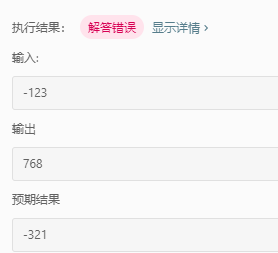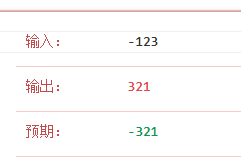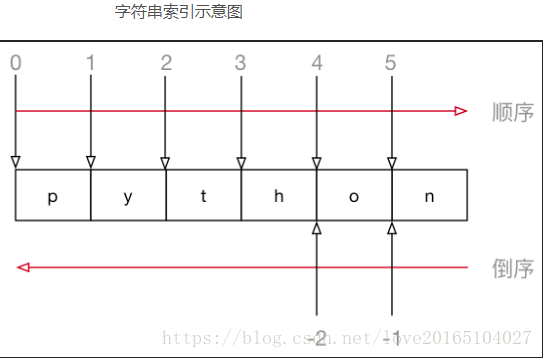3. 给出一个 32 位的有符号整数,你需要将这个整数中每位上的数字进行反转。
第一次错误答案:自己的解答直接忽略了负号和溢出的情况,假设我们的环境只能存储得下 32 位的有符号整数,则其数值范围为 [−231, 231 − 1]。请根据这个假设,如果反转后整 数溢出那么就返回 0。
class Solution(object):
def reverse(self, x):
i = x % 10
k = x / 100
j = (x/10)%10
num = i*100 + j *10 + k return num

第二次错误答案:先利用str()函数将整数转化为字符串,然后反转,再利用int()函数将字符串转化为整型,最后判断数值是否溢出。
x<0时,字符串截取的方法不对
1 class Solution(object): 2 def reverse(self, x): 3 if x >= 0: 4 reversed_x = int(str(x)[::-1]) 5 else: 6 reversed_x = int(str(x)[:0:-1]) 7 8 if -2**31 < reversed_x <2**31-1: 9 return reversed_x 10 else: 11 return 0

注:

Python中字符串切片方法
字符串[开始索引:结束索引:步长] 切取字符串为开始索引到结束索引-1内的字符串 步长不指定时步长为1 字符串[开始索引:结束索引]
一种正确解答:去符号->翻转数字顺序->算出数字->添加符号->判断是否溢出->输出
1 class Solution: 2 def reverse(self, x): 3 result_list = [] 4 i = 0 5 #判断x的正负,若为负则去掉符号 6 if x<0: 7 num = (-1)*x 8 else: 9 num = x 10 11 #将数字翻转 12 while num//10: 13 i += 1 14 result_list.append(num % 10) 15 num = num//10 16 result_list.append(num % 10) 17 i += 1 18 # print(result_list, i) 19 20 result = 0 21 for j in range(i): 22 result += result_list[j]*pow(10, i-1-j) 23 24 if x<0: 25 result = result*(-1) 26 if result<=pow(2, 31)-1 and result>=(-1)*pow(2, 31): 27 return result 28 else: 29 return 0

(注:
// 为整数的除法;
pow() 方法返回 xy(x的y次方) 的值。)